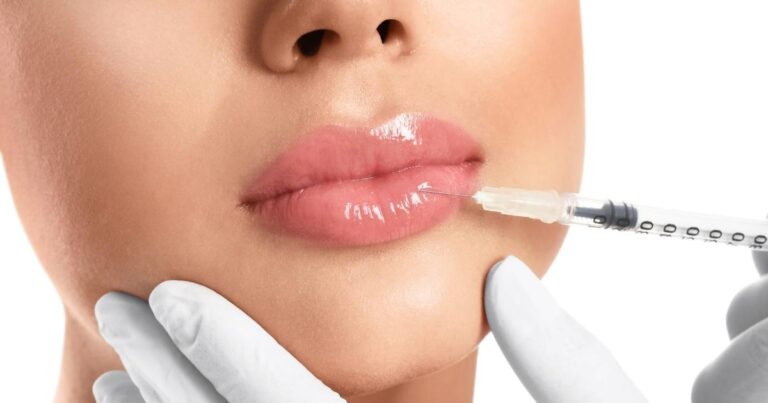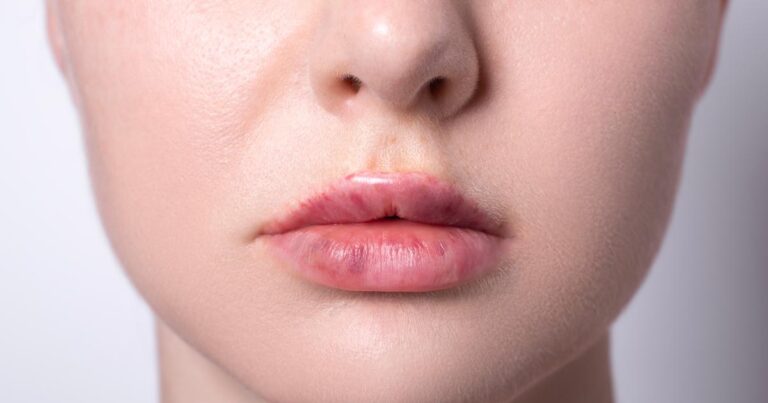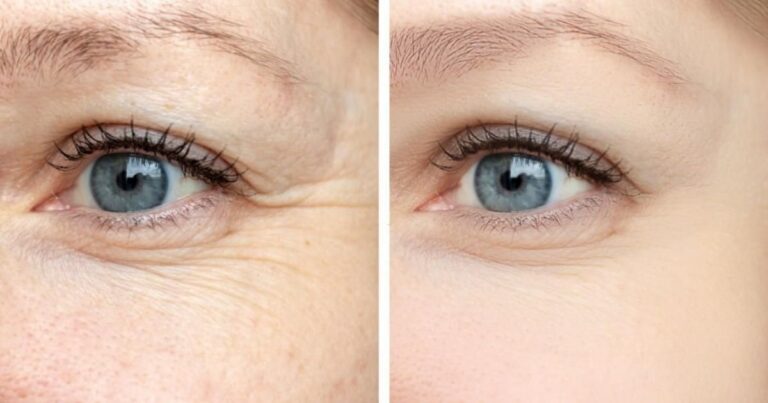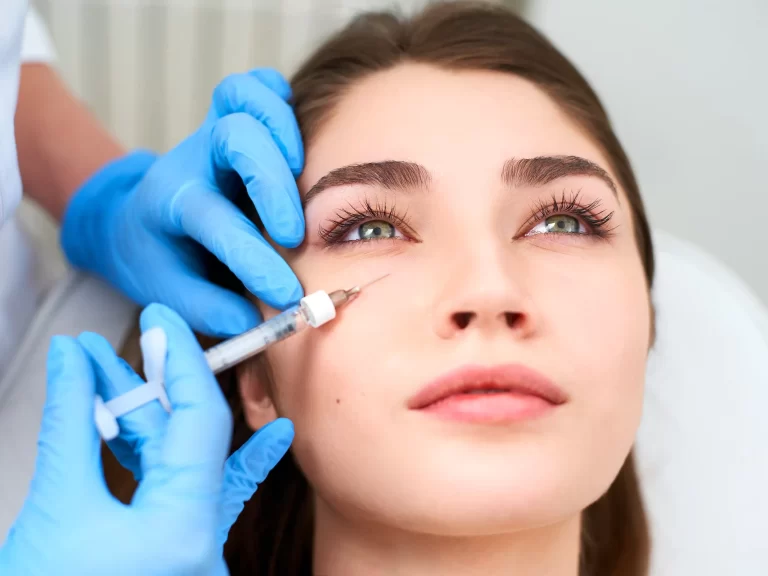Face fillers have become an increasingly popular way to reduce signs of ageing and achieve a more youthful appearance. As a minimally invasive procedure, fillers present an attractive alternative to surgery for many people. However, since fillers are not permanent, a common question is: do face fillers dissolve? Below, we cover everything you need to know about filler duration, what happens when they dissolve, and how to make them last longer.
What are Facial Fillers?
Facial fillers are injectable treatments used to add volume, smooth lines and wrinkles, and enhance facial contours. Some of the most popular fillers today include:
- Hyaluronic acid fillers (Restylane, Juvederm)
- Calcium hydroxyapatite (Radiesse)
- Poly-L-lactic acid (Sculptra)
Fillers help plump up facial tissue, erase etched-in lines around the nose and mouth, restore lost volume in cheeks or lips, and sharpen jawlines and chin. They offer an affordable, convenient way to achieve a refreshed, youthful appearance without undergoing surgery.
Do Fillers Actually Dissolve Over Time?
Yes, since facial fillers are not permanent implants, they do break down and dissolve over time. However, the length of time fillers last depends on several factors:
Book A Consultation With Dr Tarek Bayazid
Top-rated Plastic Surgeon For Fillers in Dubai
Installment Plan Available
- The type of filler – Hyaluronic acid fillers tend to last 6-18 months. Calcium hydroxyapatite and poly-L-lactic acid can last two or more years.
- The injection location – Areas with more facial movement, like lips and nasolabial folds, cause faster breakdown than static areas like temples and cheeks.
- The patient’s metabolism – Those with faster metabolisms absorb fillers quicker.
- The injection technique – Precise injections in smaller amounts are less likely to shift or distort.
Most patients can expect their facial fillers to last approximately:
- Hyaluronic acid fillers: 6-18 months
- Calcium hydroxyapatite: 12-18 months
- Poly-L-lactic acid: 2 years+
What Happens When Fillers Start to Dissolve?
As facial fillers dissolve, patients will notice the gradual return of wrinkles, lost facial volume and sharpened contours. Over time, this occurs slowly and subtly.
Some common signs fillers are wearing off include:
- Reappearance of etched lines, wrinkles, and skin folds
- Deflation of cheeks making them appear more hollow
- Thinning or loss of plumpness in lips
- Loss of a sculpted, contoured facial appearance
At this point, patients who wish to maintain their filler results must return for maintenance and touch-up injections. It is referred to as a filler “top-up”.
Can the Dissolving Process Be Slowed Down?
While facial fillers will eventually dissolve, there are a few ways patients can potentially prolong their duration:
- Start with smaller amounts: Patients who use more conservative amounts of filler at first require less maintenance overall.
- Choose longer-lasting fillers: Radiesse or Sculptra dissolve slower than hyaluronic acid options.
- Focus on static areas: Temples, cheeks, and chin lose filler slower than active areas around lips and eyes.
- Maintain a steady weight: Significant weight loss/gain can impact how quickly facial tissues metabolise the filler.
- Avoid excessive sun exposure: Too much UV exposure may contribute to more rapid filler breakdown.
- Stay hydrated: Drinking water supports healthier skin, which better retains filler.
- Gently massage treatment areas: Massage helps the filler properly integrate into facial tissues.
- Return for scheduled touch-ups: Maintenance top-ups every 9-12 months for HA fillers.
Are There Side Effects When Fillers Break Down?
For most patients, there are no side effects or consequences when their facial fillers begin dissolving other than a gradual return to their previous appearance. The body naturally eliminates the dissolved HA material.
| Side Effects | Description | Management |
| Small bumps at injection sites | In rare cases, small lumps may appear under the skin as fillers break down | It can be treated with steroid injections to reduce the appearance |
| Uneven results | One area with more movement or absorption may lose filler quickly, causing an uneven appearance | Additional filler can be injected into deflated areas to smooth results |
| Allergic reactions | Allergies to HA fillers are very rare but cause redness, swelling, itching | Avoid certain products. Antihistamines and facial steroids relieve symptoms |
| Nodule formation | Hard lumps due to not massaging filler properly into tissue | Hyaluronidase enzyme or steroid injections help dissolve nodules |
| Vascular occlusion | Filler accidentally injected into blood vessels can block blood flow | Hyaluronidase to break down filler. Warm compresses help reopen the vessel. |
In very rare cases, some patients may experience small bumps at previous injection sites as the material breaks down. These can usually be quickly treated with steroid injections or enzymes from your provider.
How Long Do Results Last After the Final Filler Treatment?
If patients discontinue maintenance sessions and no longer receive any additional filler, their final top-up results can last approximately:
| Type of Filler | Average Duration After Final Treatment |
| Hyaluronic Acid (Restylane, Juvederm) | 9-14 months |
| Calcium Hydroxyapatite (Radiesse) | 15-18 months |
| Poly-L-Lactic Acid (Sculptra) | Over two years |
- Additional details on hyaluronic acid fillers:
- Final touch-up results can last approximately one year
- Some patients see lasting improvement for up to 14 months
- Regular maintenance is needed every 6-12 months
- Radiesse typically provides over 12 months of improved volume
- Sculptra can last over two years after the final series of injection cycles
In summary, hyaluronic acid fillers require the most frequent maintenance injections but provide 9 to 14 months of results after the last top-up. Radiesse and Sculptra dissolve more slowly, giving over 12 and 24 months, respectively, lasting filler effects after the final treatment.
What’s Better for Long-Term Use: Fillers or a Facelift?
For patients who wish to restore a youthful facial appearance for as long as possible, traditional facelift surgery generally produces longer-lasting outcomes compared to ongoing filler maintenance. As a one-time procedure, a facelift can eliminate the need to return for regular injectable touch-ups and provide 10-15 years of improved contours.
Facelifts do involve a more intensive procedure, longer recovery, and higher upfront costs. For many patients seeking subtle improvements with minimal downtime, a personalised filler treatment plan remains the more appealing choice for long-term rejuvenation. An experienced provider can advise you on the right option to achieve your aesthetic goals.
In summary, the question of ‘Do face fillers dissolve?’ is met with a definitive yes. Face fillers are designed to be temporary and gradually break down over time. Understanding this aspect is vital for anyone considering facial fillers, as it impacts both the duration of results and the frequency of maintenance treatments required to sustain the desired aesthetic effect.
Discover unparalleled aesthetic expertise with Dr Tarek Bayazid, Dubai’s esteemed plastic surgeon specialising in natural-looking facial and body enhancements. Book a consultation today for a transformative experience with a globally recognised expert committed to your beauty and well-being.
FAQs About Facial Fillers Dissolving
Can I speed up the dissolving process if I don’t like my filler results?
Yes, for hyaluronic acid fillers, the dissolving enzyme hyaluronidase can help break the product down faster.
Will I need more filler products each time I get a top-up?
Not necessarily. Often, similar filler amounts can be used to maintain results over time. Volume loss happens gradually.
Do I still need injections if I look better than before treatment started?
Yes. Even if you look better than pre-treatment, to uphold the refreshed appearance, fillers must be maintained.
What happens if I don’t get any touch-up injections after my first treatment?
The filler will slowly dissolve away on its own. You can resume injections later but will need to redo the initial quantity again to see the results.
Can I switch to a different filler brand when I get maintenance injections?
Yes. Many providers use different fillers together in a “layering” approach based on each product’s advantages. Brands can be alternated over time, too.








